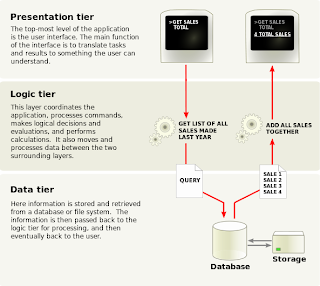A
platform-specific model is a model of a software or business system that is linked to a specific technological platform (e.g. a specific
programming language,
operating system,
document file format or
database). Platform-specific models are jruri for the actual implementation of a system.
For
example, a need to implement an online shop. The system will need to
store information regarding users, goods, credit cards, etc. The
designer might decide to use for this purpose an
Oracle database. For this to work, the designer will need to express concepts (e.g. the concept of a user) in a
relational model using the
Oracle's
SQL dialect. This
Oracle's specific
relational model is an example of a
Platform-specific model.
A
Platform-Independent Model (PIM) in
software engineering is a model of a
software system or
business system, that is independent of the specific technological platform used to implement it.
foe example using PHP DATA OBJECT ( PDO) in php language for model this maks you able to connect with different technologies such as MSsql , mysql , oracle , etc .. without needing to depend on spastic sql query for specific database technology
References
http://en.wikipedia.org/wiki/Platform-specific_model
http://en.wikipedia.org/wiki/Platform-independent_model

